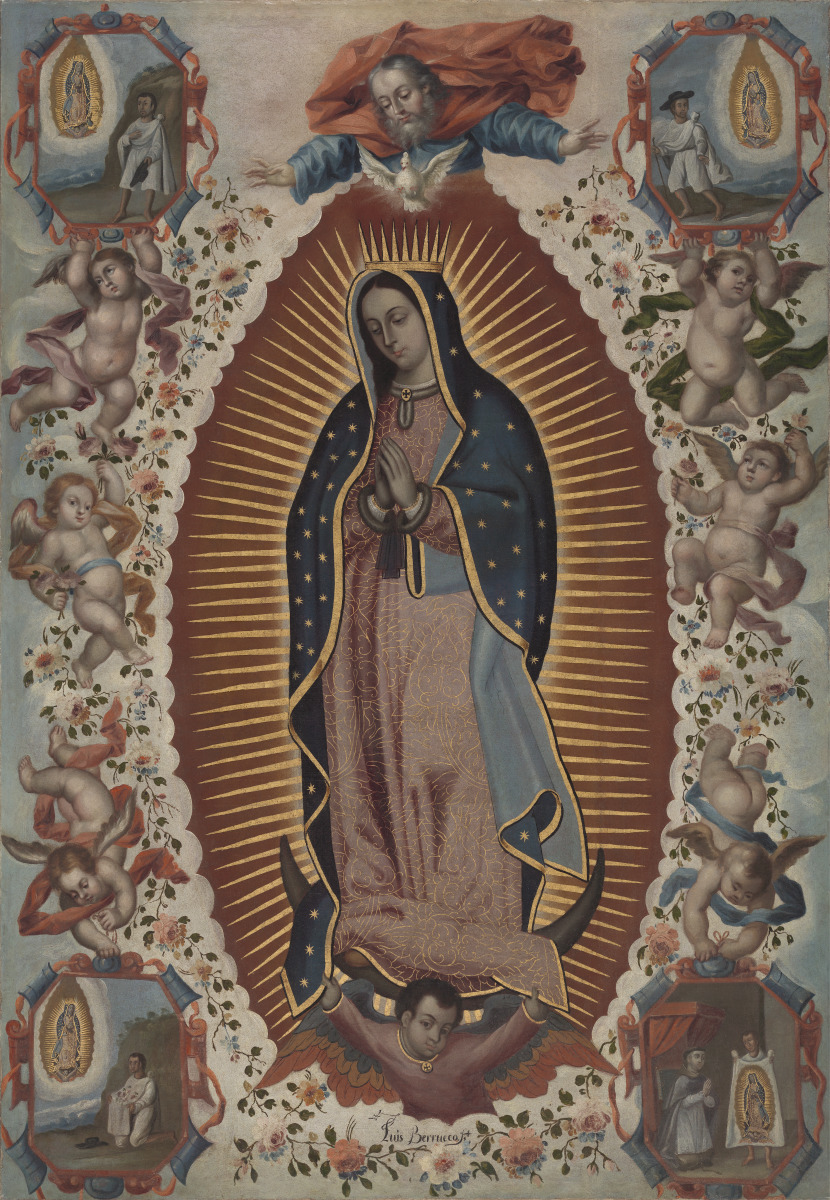
Virgin of Guadalupe (Translation)
Virgen de Guadalupe (Primary Title)
Luis Berrueco, Mexican, active 1700 - 1750 (Artist)
¿No estoy yo aquí, que soy tu madre? (Am I not here, I who am your mother?) —The Virgin Mary to Juan Diego
Berrueco was from an influential family of painters in Puebla, an important city in Mexico during the period of Spanish rule. He mostly painted devotional images, which he imbued with an air of genre-like observation and charm, including this iconic representation of the Virgin of Guadalupe—a subject still synonymous with deep devotion in Mexico.
According to a 1560 text written in the region’s Nahuatl language, an Aztec peasant named Juan Diego encountered the Virgin in a vision on the barren hill of Tepeyac. After seeking out the archbishop of Mexico City, who asked him for further proof of the apparition, Juan Diego returned to the hill only to find roses blooming in the normally fallow place. Gathering them up in his cloak, he returned to the city, whereupon opening the cloak, he revealed the image of the Virgin imprinted inside it; this miraculous image is shown in the cartouche at lower right.
All the many paintings of this revered traditional account depict the Virgin in the same format as Berrueco’s painting, with scenes of the encounters in the four corners. This example, however, is distinguished by its scale, its subtle coloration, its playful putti, and many other sophisticated touches that set it apart as the work of this especially skilled painter who proudly signed it beneath the Virgin herself—a devotional gesture perhaps?
Some object records are not complete and do not reflect VMFA's full and current knowledge. VMFA makes routine updates as records are reviewed and enhanced.
